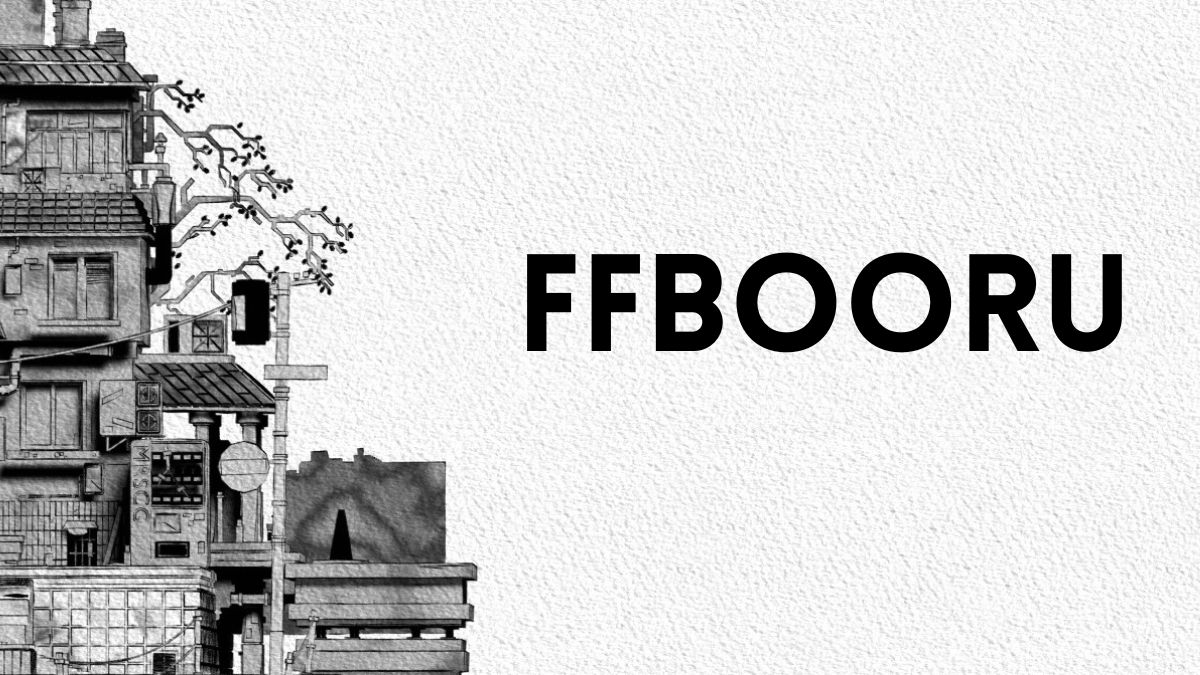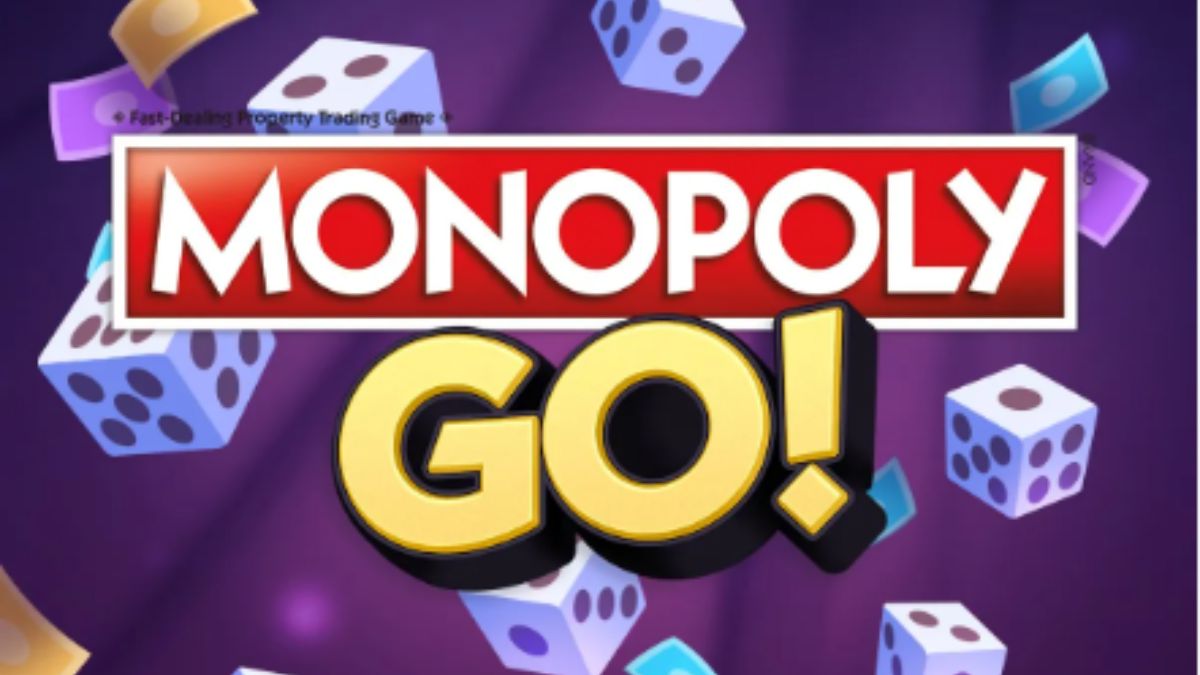TOPIC
Unlocking the Secrets of Wordle Mashable: A Deep Dive

If you haven’t heard of Wordle Mashable yet, you might be missing out on one of the most enjoyable online word games sweeping the internet. It’s a delightful challenge that brings a sense of nostalgia mixed with modern gaming fun. With its simple mechanics and engaging gameplay, players find themselves drawn into a daily puzzle adventure that tickles their brains and sparks friendly competition.
Whether you’re an avid gamer or just looking for a casual way to pass the time, Wordle Mashable has something for everyone. The thrill of guessing five-letter words while racing against the clock creates an exhilarating experience unlike any other. But what exactly is this phenomenon? Let’s take a closer look at what makes Wordle Mashable so addictive and how you can master it like a pro!
What is Wordle Mashable?
Wordle Mashable is a captivating online word puzzle that challenges players to guess a hidden five-letter word within six attempts. Each day brings a new word, keeping the excitement fresh and engaging.
The colors play an essential role in the game’s feedback system. When you guess, letters change to indicate their status: green for correct letters in the right position, yellow for correct letters in the wrong spot, and gray for incorrect ones. This interactive element adds depth to each round.
What sets Wordle Mashable apart is its community aspect. Players often share their results on social media, fostering friendly competition among friends and family. The simplicity of the design paired with strategic thinking makes it accessible yet challenging enough to keep players coming back daily. It’s more than just a game; it’s become part of our daily routines!
How to Play Wordle Mashable
Wordle Mashable is a fun twist on the classic word puzzle game. To get started, choose your first five-letter word. This initial guess sets the tone for your strategy.
Once you submit, colorful tiles will reveal how close you are to the correct answer. A green tile means you’re spot-on; yellow indicates a letter is in the word but in the wrong spot; gray tells you it’s not there at all.
You have just six attempts to crack the code. Use each guess wisely based on previous feedback. Think critically about potential words and avoid repeating letters you’ve already confirmed as incorrect.
As you play more rounds, patterns emerge, enhancing your understanding of common letter placements and combinations. Keep experimenting with different starting words to find what works best for you!
Tips for Winning at Wordle Mashable
To excel at Wordle Mashable, start with a strong opening guess. Choose words that contain common vowels and consonants. This increases your chances of uncovering the right letters early on.
Pay attention to letter frequency. Letters like E, A, R, and T often appear in English words. Using them wisely can give you an edge.
Don’t shy away from re-evaluating your strategy after each guess. Analyze which letters are confirmed or eliminated. Adapt your next word based on this information for better results.
Keep track of the patterns you notice over time. Learning from previous games will sharpen your skills and enhance your gameplay experience significantly.
The Science Behind the Game
Wordle Mashable isn’t just a fun diversion; it’s a fascinating blend of linguistics and psychology. Each puzzle is crafted to challenge your vocabulary while keeping you engaged.
The game relies on your ability to recognize patterns and make educated guesses. This taps into cognitive processes like memory recall and problem-solving skills. Players must think critically about letter placement, frequency, and common word structures.
Interestingly, the color-coded feedback—green for correct letters in the right spot, yellow for correct letters in the wrong spot—adds an element of strategy. It encourages players to adjust their thinking dynamically with each guess.
Moreover, Wordle’s limited number of attempts creates urgency without overwhelming pressure. This balance makes each round exhilarating yet manageable.
This intricate design keeps players coming back for more as they strive to crack the code behind daily challenges.
Strategies for Improving Your Score
To elevate your score in Wordle Mashable, start by analyzing the letters you’ve already guessed. Pay close attention to which vowels and consonants are still available.
Next, consider using words that contain common letter combinations. For instance, “th,” “ch,” and “sh” frequently appear in English words. This strategy can help you narrow down possibilities faster.
Don’t shy away from using less common letters after a few rounds. They might unlock the puzzle’s secret when you least expect it.
Additionally, maintain flexibility in your thinking. Sometimes the answer is not what we anticipate; be open to surprises.
Practice makes perfect. The more you play, the better you’ll become at spotting patterns and recognizing word structures quicker than before.
The Social Aspect of Wordle Mashable
Wordle Mashable isn’t just a game; it’s a social phenomenon. Friends and family members are sharing their scores, creating friendly rivalries over who can guess the word first. This competitive edge adds excitement to each round.
Social media platforms buzz with posts featuring colorful grids of guesses. Players take pride in showcasing their skills while engaging others in the fun. The thrill of revealing your score invites conversations and sparks curiosity among those yet to try it.
Group chats have become arenas for strategy discussions and tips. Collaborating on potential words fosters teamwork, making victories that much sweeter when celebrated together.
Moreover, with streams dedicated to gameplay, viewers connect over shared experiences. Watching someone crack the code live is exhilarating and builds community spirit around this simple yet captivating puzzle.
Conclusion: Why We’re Obsessed with Wordle Mashable
Wordle Mashable has captured the hearts of players worldwide. Its simple yet addictive format keeps us coming back for more. The thrill of guessing a five-letter word in just six tries creates an excitement that is hard to replicate.
The game’s design encourages friendly competition among friends and family, making it a social event rather than just a solitary pastime. Sharing your daily score or challenging someone to play adds layers of interaction and community engagement.
Moreover, Wordle Mashable taps into our love for puzzles and problem-solving. Each game presents a new challenge, stimulating our minds while offering instant gratification upon success. This blend of mental exercise and enjoyment explains why it’s become such a phenomenon.
Whether you’re looking for brain training or simply seeking some light-hearted fun with loved ones, Wordle Mashable delivers on all fronts. It’s not just about finding the right letters; it’s also about the shared experiences and connections we forge along the way.
TOPIC
Behind the Pixel Curtain: The Rise and Raw Realities of FFBooru

In the pixel-pulsing, fantasy-fueled alleyways of the internet, there exists a hidden archive that thrives at the crossroads of fandom, eroticism, and digital expression: ffbooru. For the uninitiated, it may sound like the name of a forgotten Pokémon or a cryptic password from a bygone MMORPG. But in reality, ffbooru is part of a larger, hyper-niche ecosystem — a digital art booru that collects, curates, and occasionally courts controversy over its finely categorized database of fetish-centric artwork, primarily in the realm of transformation, inflation, furry, and gender-bending content.
What follows is a deep dive — think: submarine-level — into the surprisingly intricate world of ffbooru. We’ll explore where it came from, who uses it, why it matters in the digital age, and what it tells us about online subcultures in 2025.
Welcome to the Booru-verse
Let’s set the stage with some context. The word “booru” originates from Danbooru, the original imageboard software that revolutionized how anime and manga images were tagged, uploaded, and shared online. A “booru” is essentially a searchable, tag-based image database where content is often contributed by users. Over time, variations spawned across the internet: Gelbooru, Rule34booru, Derpibooru, e621, and more — each one catering to increasingly specific genres and tastes.
Enter ffbooru — a niche, user-driven booru focused heavily on transformation and fetish content, typically involving fantastical shifts in size, shape, gender, and species. A fusion of fandom art, speculative body horror, and adult fantasy, ffbooru isn’t just a dumping ground for wild imaginations. It’s a curated space — whether curated by art enthusiasts or compulsively organized fetishists is up for debate.
But one thing’s for sure: it has an audience, and a surprisingly loyal one at that.
What Exactly Is FFBooru?
At its core, ffbooru is an image repository. But calling it that feels like calling Tokyo just “a city” — technically true, but existentially inadequate.
The platform is built with a familiar booru structure: a clean (if a bit retro) interface, exhaustive tagging system, and user moderation. Users upload artwork — often AI-assisted, sometimes hand-drawn, occasionally photomanipulated — and tag it with fetish-specific categories: “inflation,” “expansion,” “furry,” “TG” (gender transformation), “BBW,” “belly,” “futa,” and more.
If this makes your eyebrows rise or your heart flutter — mission accomplished. ffbooru trades in the provocative and the peculiar. But it’s also highly methodical. Tags aren’t slapped on randomly; they’re curated to offer precision. Want a female-to-male dragon transformation with pregnancy expansion and mind control? There’s a tag string for that.
It’s this combination of hyper-specificity and expressive freedom that draws people in. For some, it’s a haven. For others, it’s an artistic rebellion. For the rest, it’s a rabbit hole of the most unpredictable kind.
The Audience: Who Is Browsing FFBooru?
Unlike mainstream imageboards, ffbooru isn’t for the casually curious. Its user base is tight-knit, often anonymous, and deeply engaged in transformation subgenres.
Demographics are hard to pin down (few users are volunteering their LinkedIn), but browsing behavior suggests three dominant user types:
-
The Lurker-Curator
This person visits often, never posts, but has developed advanced tagging skills and a digital nose for “rare” uploads. They might never comment, but they know every artist’s archive like the back of their hand. -
The Artist-Alchemist
Often blending AI and traditional art, these users contribute new pieces regularly. They’re experimenting — both with media and identity. For many, ffbooru is a sketchpad for fantasies they can’t post on Instagram. -
The Commentator-Fanatic
Passionate, verbose, and always ready to debate the ethics of blob TF versus weight gain TF. They keep the conversation alive, maintain the community vibe, and often cross-post links to related Discord servers or Pixiv galleries.
This is not a space for “average” internet browsing. It’s a bespoke atelier for the fetishistically inclined — a museum for the misunderstood, if you will.
Fetish Meets Fandom: The Artistic Side of FFBooru
While it’s tempting to write off ffbooru as pure smut — the DeviantArt of Deviance — there’s real artistry at play here. Much of the content requires complex digital rendering, character design, narrative context, and yes, a working knowledge of anatomy (even if it’s being flagrantly distorted).
In many cases, the images are serial — telling a story through frames or captions. These mini-narratives often revolve around transformation arcs: a character eats a mysterious fruit and inflates like a balloon, or is cursed into turning into a centaur, or morphs into a rubbery caricature of their former self. It’s surreal. It’s fantastical. It’s unapologetically niche.
And perhaps more importantly — it’s one of the only places online where these kinds of stories aren’t met with derision or censorship.
The Unspoken Rule: No Judgment, Just Tags
If Reddit is the town hall of the internet and Twitter is its late-night dive bar, ffbooru is its after-hours speakeasy where the taboo becomes tradition.
There is a tacit understanding among the community: “You don’t kink-shame me, I don’t kink-shame you.” This radical openness is what keeps ffbooru from turning into a digital battleground of taste policing. Everyone’s too busy uploading the next bizarre masterpiece.
That said, moderation does exist. Duplicate uploads get removed. Mis-tagged content is flagged. And there’s a clear divide between fantasy and real-world legality — anything violating hard boundaries like underage depictions or non-consensual real-life imagery is removed promptly.
So while it may seem like an unfiltered deluge of pixelated kink, ffbooru runs with a kind of internal logic and communal respect that gives it structure.
The Ethics of Fetish Archiving
This brings us to a nuanced question: Is ffbooru ethical?
The answer isn’t binary. It lives in the grey zone — a swirling whirlpool of consent, imagination, performance, and sometimes controversy. Critics argue that boorus like ffbooru normalize fetishes that, in the wrong context, can spiral into unhealthy obsessions or blur the lines between fiction and reality.
Supporters counter with an equally valid stance: outlets like ffbooru offer a safe, anonymous space to explore complex fantasies that might otherwise be buried under shame. In a world where sexual repression and marginalization often go hand-in-hand, boorus serve as a pressure valve.
The debate continues. But like many things in modern sexuality, the conversation is evolving.
AI’s Role in the FFBooru Renaissance
In recent years, AI-generated content has exploded across booru-style sites. ffbooru is no exception. Tools like Stable Diffusion, NovelAI, and various NSFW-adapted AI models have supercharged the ability for users to churn out high-quality, fetish-specific content in minutes.
The result? An image tsunami. While this democratizes creation, it also raises questions about artistic value, originality, and copyright. Some argue AI art dilutes the skill pool; others see it as empowering — especially for users without traditional drawing backgrounds.
In ffbooru, where narrative and fantasy often trump technical perfection, AI-generated work is increasingly welcome. In fact, many users now pair AI with digital touch-ups or write accompanying stories to elevate the material beyond prompt-spam.
We’re seeing a fusion of storytelling, kink, and technology that feels distinctly 2025.
Digital Footprints: Privacy and the Underground Nature of FFBooru
Despite its open platform, ffbooru maintains a low profile. There are no banner ads, no aggressive SEO, no TikTok dances driving traffic. It thrives in relative obscurity — part by design, part by necessity.
The anonymity of both creators and viewers is a critical component of the platform’s longevity. Users trust that their curiosities won’t be exploited, monetized, or exposed. That sense of safety is what keeps them coming back.
But as data privacy concerns intensify across the internet, it’s worth asking: how long can platforms like ffbooru fly under the radar?
For now, its underground appeal is its protection. But its ever-growing content library is also making it harder to ignore.
Final Verdict: Why FFBooru Matters More Than You Think
ffbooru may not make it into art school curriculums or Wired magazine covers. But it’s a case study in something far more important: how digital spaces empower the expression of taboo, identity, and imagination.
It shows us what happens when the internet becomes a true sandbox — where fantasy isn’t just tolerated, but archived, tagged, and treasured.
It reminds us that art can be provocative, bizarre, unfiltered, and still meaningful. And it proves that even in 2025, the most fascinating corners of the web are often the ones we stumble into, not the ones shoved in our feed.
So next time you hear someone mention ffbooru, don’t laugh. Click. Explore. Try to understand. Behind every inflation tag and transformation arc lies a digital artist trying to make sense of their desires — or simply trying to make someone else smile, blush, or double-take.
In an internet increasingly obsessed with conformity, ffbooru is the weird, wonderful, and wildly specific breath of fresh air we didn’t know we needed.
TOPIC
Effective Link-Building Strategies for Today’s Digital Landscape

Introduction
In digital marketing, the significance of link-building as a pivotal SEO strategy cannot be overstated. By acquiring hyperlinks from external websites to your own, link-building boosts your site’s authority and improves its visibility in search engine results. Effective link-building creates a network of high-quality, contextually relevant links that foster credibility and authority. As digital environments evolve, marketers are tasked with adopting more sophisticated strategies that align with ethical standards and search engine algorithms.
The importance of a robust link-building strategy continues to grow as search engines develop ever more sophisticated methods for determining which sites should rank at the top of search results. By embracing ethical practices and focusing on content quality, businesses can cultivate a sustainable digital presence and effectively navigate the competitive online landscape.
Importance of Quality Over Quantity
Historically, the effectiveness of link-building was often measured by the sheer number of backlinks a website could accumulate. However, as search engine algorithms have evolved, the focus has shifted significantly toward learn about link building strategies prioritizing quality over quantity. In today’s digital landscape, obtaining a high volume of irrelevant or low-quality links can harm a website’s reputation and rankings.
Search engines now prioritize the relevance and authority of linked content, meaning link-building efforts should center around acquiring links from reputable websites that align with the target site’s content theme. This deliberate focus on quality enhances search rankings and helps cultivate genuine connections within a given niche or industry.
Quality links act as endorsements of a site’s value and reliability. By associating your site with credible sources, you increase its authority, signaling to search engines that your content is trustworthy and beneficial to users. This, in turn, contributes to better organic search performance and broader digital visibility, which are crucial for long-term success.
Ethical Link-Building Techniques
1. Guest Blogging: Guest blogging on well-respected platforms within your industry is an impactful way to acquire quality backlinks. By contributing insightful and original content to other sites, you gain exposure to new audiences and earn valuable backlinks that accentuate your expertise and authority.
2. Content Creation and Promotion: Developing shareable and engaging content is key to attracting organic backlinks. Visual content, such as infographics, videos, and interactive charts, can capture users’ attention and encourage them to link to your site. Promoting this content through social media and outreach campaigns can further amplify its reach.
3. Building Resource Pages: Establishing resource pages that offer valuable information and tools for your target audience is a great strategy. These pages can serve as go-to references for industry professionals, leading to natural backlinks from other sites that wish to share these resources with their audiences.
4. Networking and Relationship Building: Building relationships with industry influencers, bloggers, and thought leaders can result in mutual link exchanges. By fostering genuine connections within your industry, you create opportunities for collaboration and highlight your expertise through others’ endorsements.
Incorporating External Links Effectively
Incorporating relevant and credible external links within your content enhances its value and offers readers added context and depth. When thoughtfully embedded, external links serve as references and endorsements of the content’s reliability and authenticity. This approach aligns with best practices for content creation and helps build a robust network of reputable affiliations.
To seamlessly integrate external resources, consider linking to authoritative sources that expand on key points within your content. For example, referencing articles from trusted SEO publications or academic studies can reinforce your message and add weight to your arguments when discussing ethical link-building strategies. Including such resources demonstrates thorough research and provides your audience with avenues for further exploration.
Moreover, using external links strategically can enhance user engagement by directing them to supplementary content that augments their understanding of the topic. This creates a more informative and enriching experience, positioning your content as comprehensive and valuable.
Navigating Helpful Content Guidelines
Adhering to Helpful Content Guidelines is pivotal for ensuring that your content meets the evolving expectations of both search engines and users. These guidelines emphasize creating people-first content that provides genuine value, addresses users’ needs, and fosters meaningful engagement.
To create content that aligns with these principles, thoroughly research your target audience and understand their interests, preferences, and challenges. This information will guide the development of relevant, solution-focused content that resonates with readers and satisfies their informational needs. Engaging with audience feedback and refining your content strategy based on these insights will help maintain your content’s relevance and appeal.
Additionally, ensuring content accessibility and readability is essential for enhancing user experience. This includes optimizing site structure, using clear and concise language, and incorporating headings, subheadings, and bullet points where appropriate to break down complex information into manageable sections. Delivering content that is easy to digest and navigate will encourage users to engage more deeply with your material.
Conclusion
Effective link-building is a dynamic and integral component of a successful SEO strategy, central to enhancing online visibility and authority in today’s competitive digital landscape. Prioritizing quality over quantity, embracing ethical practices, and incorporating trusted external resources are key elements of a robust link-building strategy. By adhering to Helpful Content Guidelines and continuously refining your approach, you can cultivate a sustainable digital presence that consistently attracts and engages users.
Maintaining a commitment to quality, authenticity, and user-centric principles will set your link-building efforts apart as the digital environment evolves. By establishing genuine connections, delivering valuable content, and fostering an interactive community, you can strengthen your digital footprint and achieve enduring success in your online endeavors.
TOPIC
Mastering Dice Management in Monopoly Go: Essential Tips for Efficient Play

Introduction
Monopoly Go brings a fresh twist to the classic board game by integrating a digital dice-rolling mechanic that’s essential to your progress. Whether you’re advancing through properties, completing tasks, or competing in events, dice rolls are the core of your gameplay. However, as dice are limited, learning to manage them efficiently can significantly impact your success. In this article, we’ll explore the importance of controlling your dice usage, maximizing free dice sources, and employing smart strategies to ensure you have enough to keep playing and win the game.
Earning Dice
Hourly Free Dice
Monopoly Go offers free dice every hour, which accumulate until you reach the 200-dice cap. Once you hit this limit, the game stops replenishing your dice until they drop below 200. If you’re low on dice, it’s a good idea to wait for the hourly refresh to continue playing.
Quick Wins
Completing daily tasks known as Quick Wins rewards you with additional dice. These tasks are simple actions like moving around the board or improving your properties. By consistently completing these, you’ll steadily build up your dice stash.
In-Game Store Rewards
Every eight hours, the in-game store offers Monopoly Go Dice. Be sure to check in regularly and collect these rewards to maximize your dice supply without spending any money.
Tycoon Club Rewards
Joining the Tycoon Club gives you access to exclusive daily rewards, including free dice. If you’re a regular player, the Tycoon Club can be a valuable source of dice to keep you going.
BuyMMOG Purchases
If you’re looking for an instant dice boost, you can purchase additional dice through platforms like BuyMMOG. This option provides a quick way to keep playing without waiting for free dice to accumulate.
Making the Most of Sticker Albums
Collecting and Completing Sticker Albums
As you play Monopoly Go, you’ll earn sticker packs, and completing sticker albums rewards you with free dice. The rarer the stickers, the bigger the reward, making it a worthwhile goal to collect and complete these albums.
Trading Stickers with Friends
You can trade duplicate stickers with friends, which helps you complete albums faster. This adds a social element to the game, and working together can expedite your progress.
Completing Albums Multiple Times
Once you finish a sticker album, you can complete it again to earn even more dice. The more albums you finish, the more rewards you’ll accumulate, making it a great way to increase your dice supply over time.
Rolling Doubles in Jail for Extra Dice
Risky but Rewarding Strategy
Landing in Jail can feel like a setback, but it offers a unique opportunity to earn extra dice. If you roll doubles within three turns, you’ll not only get out of Jail but also receive bonus dice. While it’s a risky move, the potential reward can be significant, especially if you plan strategically.
Dice Roll Multiplier for Increased Payout
If you’ve activated a higher dice roll multiplier, landing doubles in Jail becomes even more lucrative. For example, rolling doubles with a multiplier of 100 could earn you thousands of extra dice. This strategy is especially useful if you’re close to a milestone or special event, as the increased dice payout can help you advance faster.
Partner Events: Teaming Up for Dice
Finding Active Players
Look for active players on your friends list or in the community who participate in events and exchange dice. They’re more likely to help you in team events.
Saving Dice and Reaching Milestones
Teaming up with active players lets you share event tasks, saving your dice and helping you reach milestones faster. Focus your dice elsewhere while your partner helps you progress.
Choosing the Right Dice Roll Multiplier
Adjusting Based on Upcoming Tiles
Check your board ahead of your roll. If there are high-reward spaces, use a higher multiplier. If it’s just standard tiles, a lower multiplier can save dice.
Maximize Rewards or Save Dice
Use a high multiplier when key event spaces are ahead to maximize your rewards. If you’re just moving around the board or on a regular property, save dice by using a lower multiplier.
Strategic Stopping: Know When to Take a Break
When to Pause During Events
Stop playing when you’re close to a milestone but unsure if you’ll make it in time. This prevents unnecessary dice expenditure.
Avoid Over-Spending in Tournaments
If you’re far from the next prize or it’s the end of an event, consider saving your dice for future opportunities instead of trying to push through.
Conclusion
By using these strategies, you can save dice and maximize their impact in Monopoly Go. Focus on earning free dice, completing Quick Wins and sticker albums, and partnering with active players. Remember to adjust your dice roll multiplier wisely and know when to take a break during events. Applying these tips will help you progress efficiently and make the most out of your gameplay!
-

 TOPIC12 months ago
TOPIC12 months agoTop 10 Gift Cards in Romania: A Complete Guide
-

 TECHNOLOGY1 year ago
TECHNOLOGY1 year agoLync Conf Mods You Should Install Today for Better Meetings
-

 TECHNOLOGY1 year ago
TECHNOLOGY1 year agoUnveiling Sifangds: The Future of Digital Innovation
-

 TOPIC12 months ago
TOPIC12 months agoPuppygirlxd: A Case Study in Modern Identity and Expression
-

 TECHNOLOGY12 months ago
TECHNOLOGY12 months agoWhy Plutoscreen. com/ is Revolutionizing Online Experiences
-

 TOPIC1 year ago
TOPIC1 year ago8 Energy-Efficient Basement Renovation Tips for a Sustainable Space
-

 TECHNOLOGY1 year ago
TECHNOLOGY1 year agoWhy SeveredBytes.net/ is Your Next Go-To Resource for Tech Insights
-

 TOPIC12 months ago
TOPIC12 months agoHow Eolaneday.iday is Shaping Modern Social Connections
